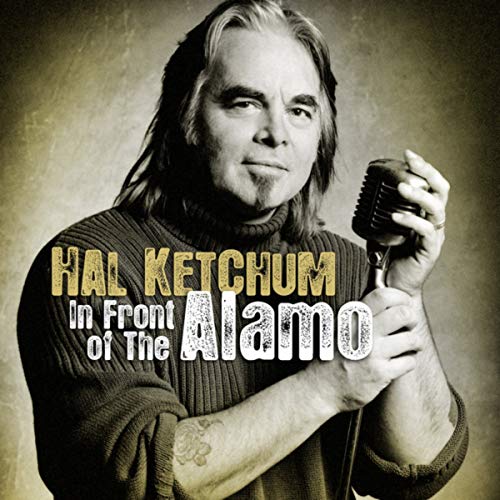
Point of view is the single most important decision you make early in the development of your song: Who is talking? To whom? And why? It’s not a decision to take lightly: how you develop your song’s world, what you have to say about it, and how you’ll say it, all depend on which of these four possibilities you choose: 1) Direct Address 2) 2nd Person Narrative 3) 1st Person Narrative or 4) 3rd Person Narrative.
Videos by American Songwriter
You need to choose wisely. Each possibility presents different ways to look at the world your song creates. Each one has its advantages, and each one has its limitations. The trick is picking a point of view that’s the absolutely perfect platform for your song – any other POV would lessen its impact.
Over the next few issues, we’ll take a look at each of these in turn, seeing what advantages each one offers. Let’s start here:
3rd Person Narrative
As a 3rd Person Narrator, you are a god. You stand outside the world of the song, the world that you create. So you know everything. You know the past, the present, and the future. You also know the minds and hearts of every character you create.
As narrator, you describe the world and comment on it. Because you (the narrator) know everything, we believe everything you say. You always tell the truth.
Because you, as narrator, are outside the world of the song, we (the audience) have no intimacy with you. You are not a part of the world you’re singing about – Unless inside a quote, there are no 1st or 2nd Person pronouns in 3rd Person Narrative.
You can see why no one thinks of you as a character in the story. You’re the storyteller, and it’s a story you’re not a part of. You have a universal view.
So how does all of that translate into the perfect 3rdPerson Narrative? Like this:
“In Front of the Alamo” — by Gary Burr
In front of the Alamo
In the fading light of the Texas day
San Antonio
Through the windshield of a Chevrolet
With the front tires pointed out of town
She sighs and rolls the window down
Counts to three and throws that wedding band
In front of the Alamo
That’s a pretty good place to make a stand
In front of the Alamo
Where the cameras click and the tourists stare
A long, long time ago
She met the man in question there
She wanted trust, she wanted truth
The two things he found hard to do
So forever was shorter than she planned
In front of the Alamo
That’s a pretty good place to make a stand
She didn’t come for inspiration
Or to breathe the mighty dust of heroes lost
She just felt the time was right
At this random traffic light
To say, ‘Enough is enough’ and move on
In front of the Alamo
In the fading light of the Texas day
San Antonio
Through the windshield of a Chevrolet
Maybe something in the air
Makes the timid braver there
To cross the line that they’ve drawn in the sand
In front of the Alamo
They held on, she lets go
In front of the Alamo
That’s a pretty good place to make a stand
First, look at the universal view of the narrator:
In front of the Alamo
In the fading light of the Texas day
San Antonio
Through the windshield of a Chevrolet
With the front tires pointed out of town
She sighs and rolls the window down
Counts to three and throws that wedding band
This creates a whole world – one with unlimited vision. The view starts longer range and telescopes into her Chevrolet. The narrator can comment on the world:
That’s a pretty good place to make a stand
The narrator knows the past:
A long, long time ago
She met the man in question there
The narrator knows the minds of both the characters:
She wanted trust, she wanted truth
The two things he found hard to do
So forever was shorter than she planned
The narrator suggests a perspective:
Maybe something in the air
Makes the timid braver there
To cross the line that they’ve drawn in the sand
And finally, the narrator has an omnipresent (timeless) view of events, connecting her with the heroes of the Alamocenturies ago:
In front of the Alamo
They held on, she lets go
We have no feeling of intimacy with either the narrator or the woman in the song. We might identify with her or be inspired by her, but we view her from a distance. We stand with the narrator outside the world of the song.
Here’s a list of the many advantages offered by 3rdPerson Narrative:
1. Narrator and audience stand outside the world of the song
2. Narrator possesses a universal view, so,
3. Narrator always tell the truth
4. Narrator comments on the events in the world of the song
5. Narrator knows the past, present and future
6. Narrator knows the minds and hearts of every character
7. Audience has no intimacy with narrator
8. Audience has no intimacy with characters
9. Narrator has an overview of time. Can have more than one now.
10. The singer’s characteristics (age, gender, body type, reputation etc.) are irrelevant
3rd Person Narrative asks the writer: give us something to observe -– stories, facts, events, the rise and fall of empires. Generally, 3rd Person Narrative is more effective focusing on facts instead of feelings.
Pat Pattison is a professor at Berklee College of music, where he teaches lyric writing and poetry.







Leave a Reply
Only members can comment. Become a member. Already a member? Log in.